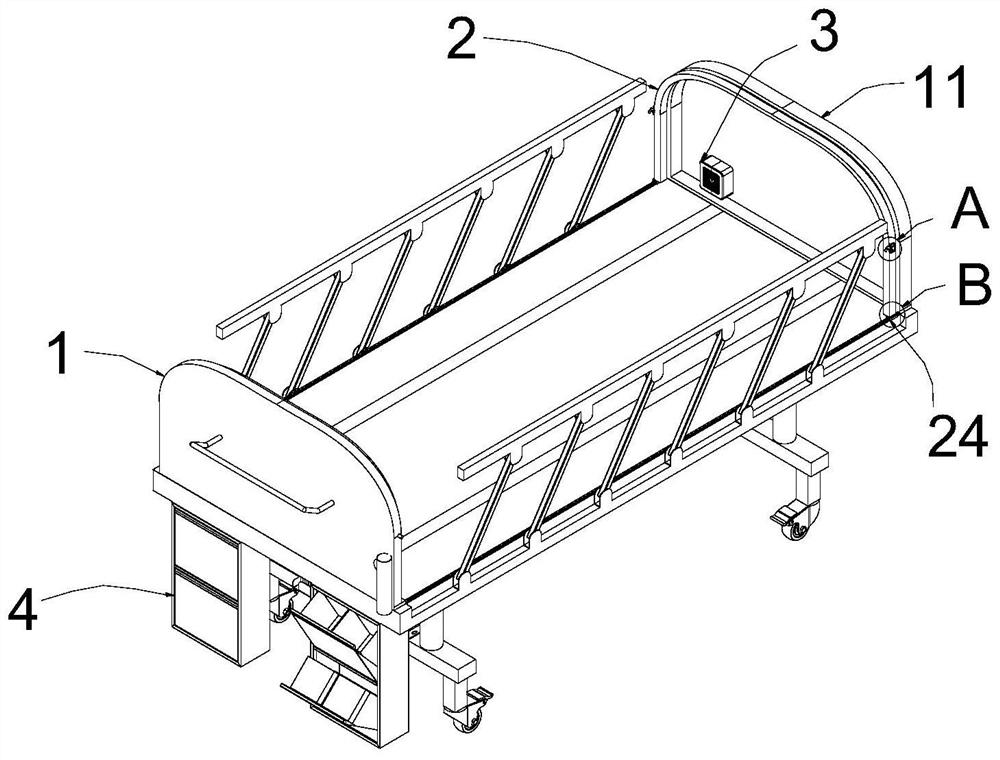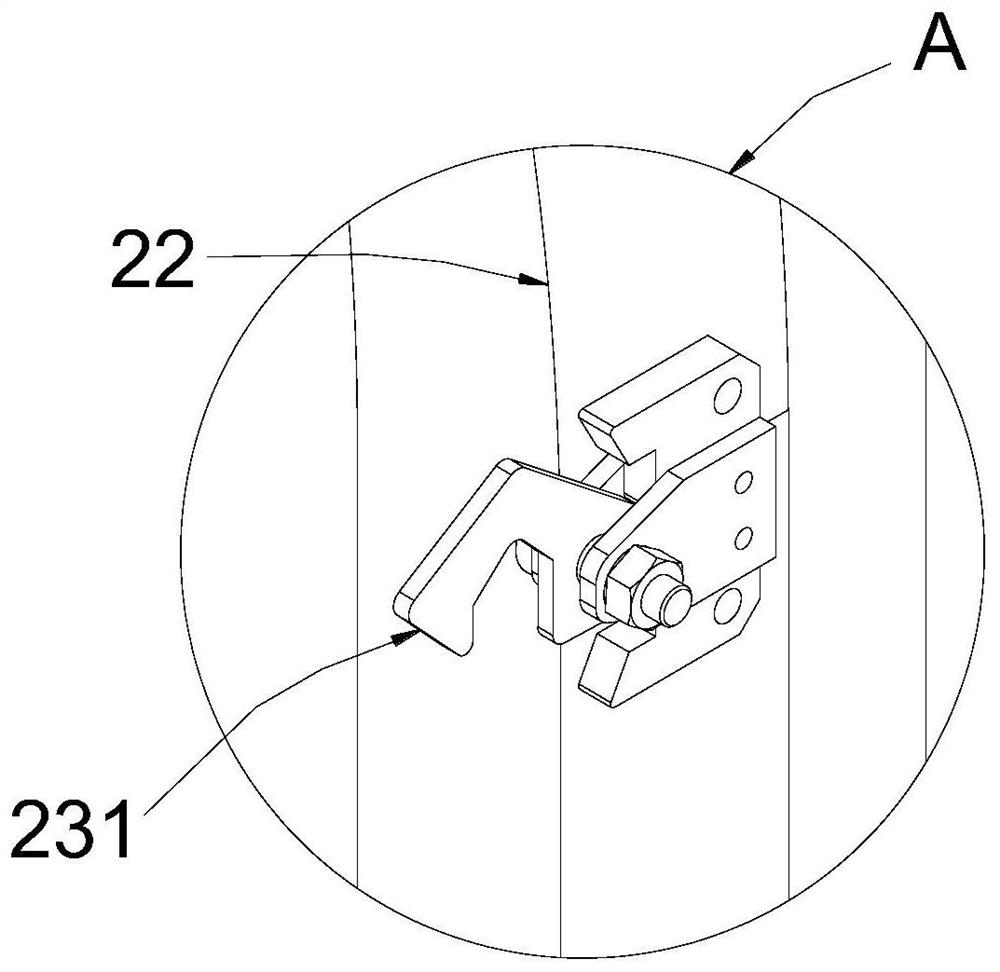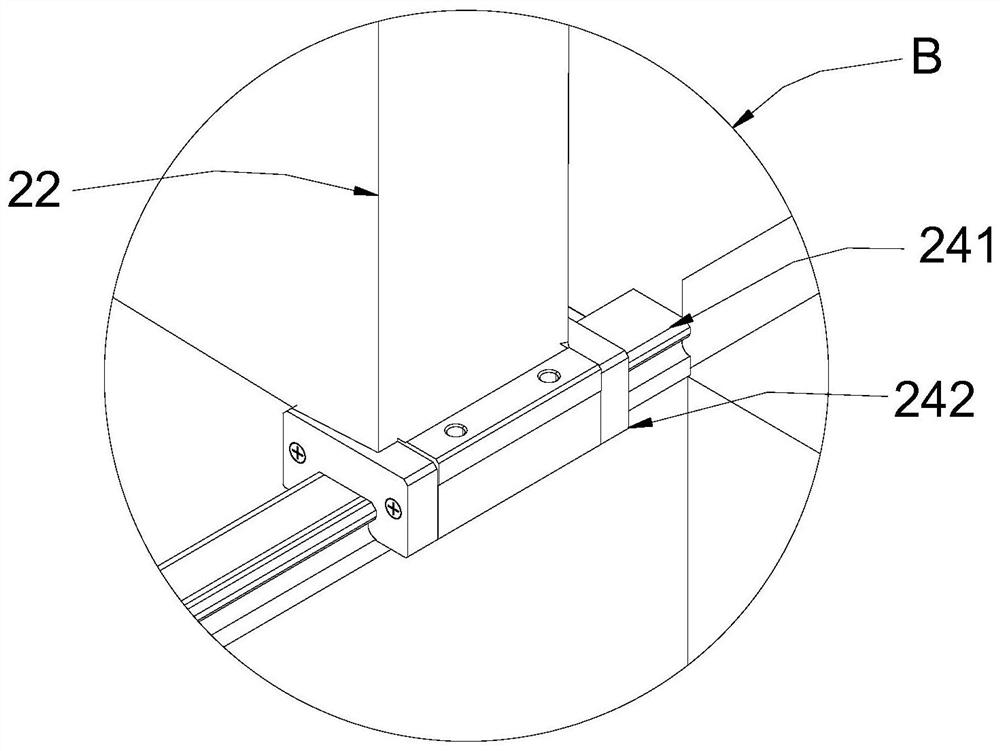Patient transfer device for intensive care
A technology of intensive care and transfer devices, applied in transportation and packaging, medical transportation, respiratory protection containers, etc., can solve the problems of increasing patient condition, poor treatment methods, lack of protective devices in hospital beds, etc., and achieve the effect of avoiding secondary infection
- Summary
- Abstract
- Description
- Claims
- Application Information
AI Technical Summary
Problems solved by technology
Method used
Image
Examples
Embodiment Construction
[0040] In order to make the technical means, creative features, goals and effects realized by the present invention easy to understand, the present invention will be further described below in conjunction with specific embodiments, but the following embodiments are only preferred embodiments of the present invention, not all. Based on the examples in the implementation manner, other examples obtained by those skilled in the art without creative work shall fall within the protection scope of the present invention. The experimental methods in the following examples are conventional methods unless otherwise specified, and the materials, reagents, etc. used in the following examples can be obtained from commercial sources unless otherwise specified.
[0041] Example:
[0042] like Figure 1-12 As shown, the present invention provides a patient transfer device for intensive care, including a hospital bed 1, baffles 11 are provided on both sides of the hospital bed 1, and the baffl...
PUM
 Login to View More
Login to View More Abstract
Description
Claims
Application Information
 Login to View More
Login to View More - R&D
- Intellectual Property
- Life Sciences
- Materials
- Tech Scout
- Unparalleled Data Quality
- Higher Quality Content
- 60% Fewer Hallucinations
Browse by: Latest US Patents, China's latest patents, Technical Efficacy Thesaurus, Application Domain, Technology Topic, Popular Technical Reports.
© 2025 PatSnap. All rights reserved.Legal|Privacy policy|Modern Slavery Act Transparency Statement|Sitemap|About US| Contact US: help@patsnap.com



